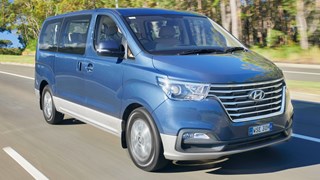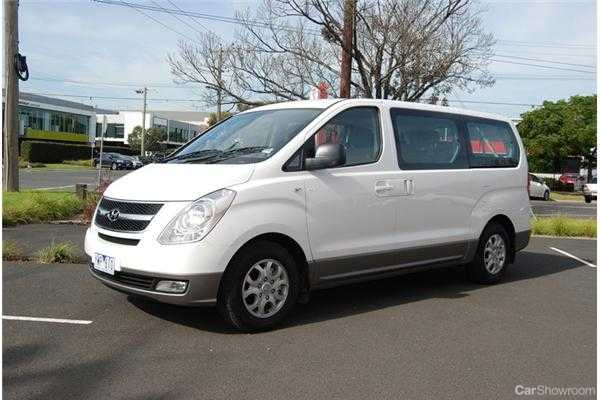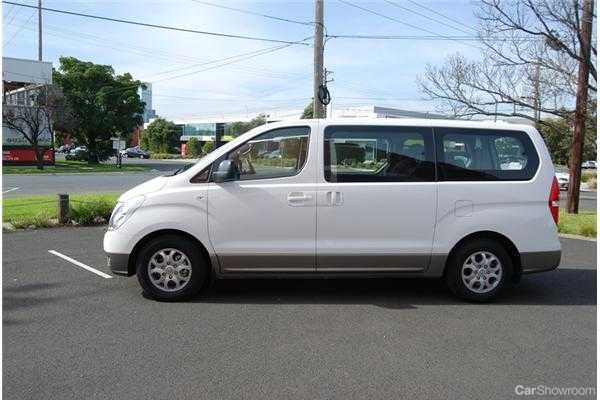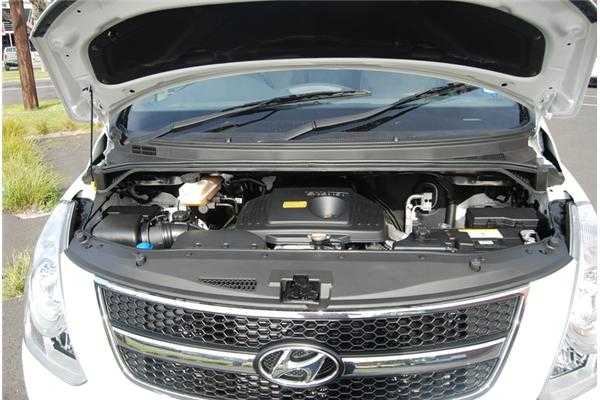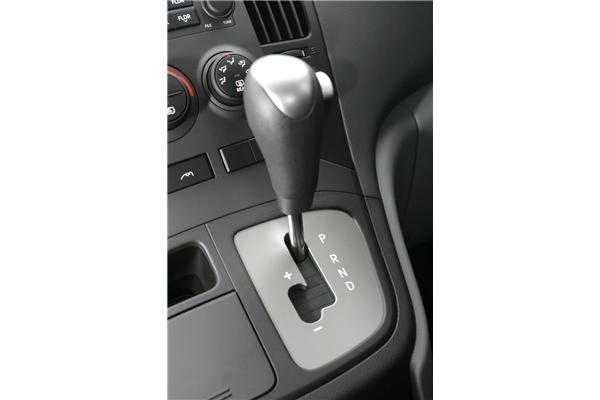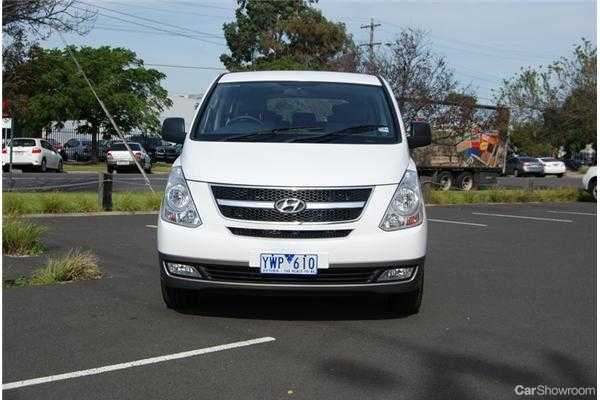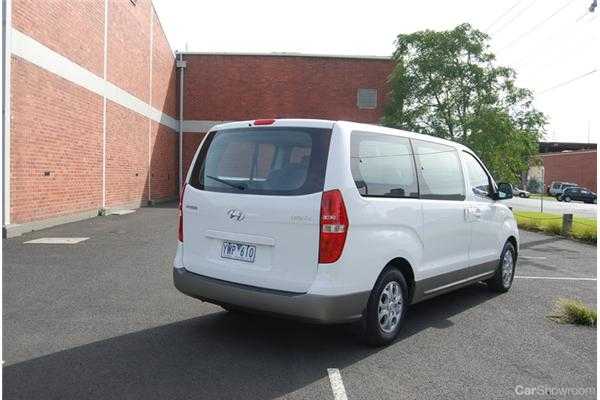When Hyundai launched the iMax people mover it emerged on-top from the ultimate test – a family Christmas holiday road trip from Melbourne to Sydney and back again. Time then to re-visit the iMax – which the Car Showroom juniors still call their favourite car.
‘Big Max’ has been one of Hyundai’s stars, it now boasts a trophy cabinet ‘chockers’ with awards – including four-time ‘People Mover Of The Year’ and the automobile clubs’ cheapest people mover to run – and has been updated with improved audio and enhanced safety thanks to standard ABS anti-lock brakes, Electronic Stability Control and Traction Control.
Dollars count in the people mover segment and despite some big-name Germans and of course Toyota’s venerable Tarago, Hyundai and sister company Kia dominate the sales chart with iMax and Carnival together accounting for more than half the total sales. As well as families, the Hyundai iMax is hugely popular with chauffer-drive, hotels and airport shuttle operators.
2012 Hyundai iMax Overview
The eight-seat Hyundai iMax is sold in one model grade powered by either a petrol ($37,290) or turbo-diesel ($39,990) engine. Car Showroom tested the petrol version which is offered only with a four-speed automatic transmission (diesel is exclusively a five-speed manual).
Hyundai iMax comes with sliding doors on both sides and, unlike some wagon-like people movers, provides massive interior space and a very handy 851-litres of luggage space. We’ve actually used a Hyundai iMax for a boy’s golf weekend and it easily accommodated four blokes, luggage, four full-size golf bags and four golf buggies…try doing that with a Honda Odyssey.
2012 Hyundai iMax Engine
Our Hyundai iMax test car employed the 129kW/228Nm 2.4-litre four-cylinder petrol engine which drives the front wheels via a four-speed automatic transmission. Fuel consumption is rated at 10.6l/100kms.
When we completed our Melbourne-Sydney-Melbourne road trip, our iMax was the 125kW/392Nm 2.5-litre four-cylinder turbo-diesel which drives via a five-speed manual transmission and offers fuel consumption of 8.5l/100kms.
Ask us which one we prefer and it’s a bit of a challenge – we like the extra torque of the turbo-diesel but we (and most family buyers) would like it better in automatic.
2012 Hyundai iMax The Interior
Within seconds you know the Hyundai iMax is smart design – just a casual glance at the interior is all you need to confirm that. Slide open both side doors and access to the second seating row is a snack and clever folding/sliding of the second row seat means even those headed for the third row have a straight-forward journey.
For those up front there’s a bit of s step-up (all vans are similar) but once seated the driver will discover Hyundai iMax actually delivers a reasonable driving position (height adjustment for the seat helps). Instruments are conventional but family buyers especially will appreciate the considerable storage bins in the centre console and doors.
There’s some alloy look trim items and the colour palette is two-tone – both to add some style - and the seats are trimmed in Tricot suede which looks good and appears to be long-wearing.
But where the Hyundai iMax really scores is interior space. As well as our latest time in the iMax tested here, we’ve recently had numerous rides in both the second row and third row of airport shuttle and chauffer-drive iMaxs and can vouch for the roominess and practicality of Hyundai’s full-size people-mover.
For the statistically-minded, Front row leg-room is 1041mm, second-row leg-room is 995mm and even the third row scores 925mm. Luggage space is an impressive 851-litres – impressive because many rival wagon-based, and even some van-based, people movers lose considerable luggage capacity when fully loaded with people. Not Hyundai iMax as confirmed by our boys golf weekend.
2012 Hyundai iMax Exterior & Styling
No longer the new kid on the block, the Hyundai iMax still looks smart and ‘un-boxy’ (that’s a compliment for people movers). We’ve always like the modern grille and headlights and some character lines around the wheel arches and lower doors give some softness to the profile.
At the rear the massive door also has some curves included and the large rear window is good for reversing.
For sure the overall visual is aided by the standard 16-inch alloy wheels.
2012 Hyundai iMax On The Road
No family road trip to Sydney this time for the Hyundai iMax – just the normal Car Showroom test routine.
Melbourne being Melbourne, as we collected our iMax from Hyundai the rain was coming down like a fire hose, streets flooded and the SES rescuing people from flooded houses. So we did what any fair-dinkum automotive reviewer would do…headed straight to our mountain roads test route.
Sitting high in the iMax and with the weight distribution of a people mover, you know you’re not driving a Hyundai Veloster. That said, the 2.4-litre four-cylinder is nicely calibrated to the four-speed automatic for reasonable response and smooth shifts.
Over the twists and curves our Hyundai iMax was largely untroubled by the flooded roads. Naturally when pushed beyond the limit, understeer was the default chassis response and we became frequent friends with the traction control system, but not unduly so.
So a note to the ‘buff’ magazines and others who criticize people mover dynamics: You have to move on guys. Practicality rules in this league – these aren’t ‘Track Day’ cars and in fact modern generation models like Hyundai iMax drive quite well.
Back in the CBD you do need some adjustment on the size front. In an iMax, even with its rear parking sensors, you might have to by-pass those miniscule parking spaces into which you toss your Hyundai i20.
Same for the height – at 1925mm there are some basement garages where the Hyundai iMax, like some large SUVs, will challenge the roofline.
2012 Hyundai iMax Challenges
All that interior space requires some packaging and at 5125mm in length, 1925mm high and 1920mm in width, the Hyundai iMax isn’t going to blend into the crowd. Toss-in the 11.22-metre turning circle and tight shopping mall carparks aren’t a walk-in-the-park.
2012 Hyundai iMax Verdict
When first launched, the Hyundai iMax drop-kicked rivals into touch with its sharp price, massive, useable space and nice dynamics. Hyundai moved swiftly to address concerns of some critics by equipping the iMax with ABS brakes, traction and stability control so those initial values hold true today as evidenced by the experts awards still coming the way of the iMax.
Bottom line? Whether you’re shopping Hyundai iMax for family or commercial use, space which you can use is critical and the iMax delivers in seats, roominess, practicality and luggage space.
Hyundai’s stylists have been clever in their material choices kitting-out the iMax inside so it looks good but is also durable and hard-wearing – another plus for families and commercial operators.
The extras that Hyundai iMax is sharply priced, looks good and drives nicely are almost incidental.
2012 Hyundai iMax The Competition
Realistically the Hyundai iMax ($37,290) competes with similar van-type people movers such as Kia Grand Carnival (from $38,990) and SsangYong Stavic (from $36,578). The Grand Carnival is a slick all-rounder and while the Stavic enjoys a slender price advantage it’s styling is…well confronting?...and it doesn’t have a petrol engine.
For us, between the Koreans, it’s a coin-toss which one to buy – Hyundai iMax or Kia Grand Carnival.
On the other hand there are wagon-based rivals like the Honda Odyssey (from $37,100) and Dodge Journey ($37,500). Both look good and drive with refinement, but can’t match the space of the iMax.
Toyota Tarago ($52,490), Volkswagen Multivan ($49,990 and $71,990) and Mercedes-Benz Vito and Viano ($52,990 and $74,990) are vans but realistically are priced out of this comparison. But if we had the coin, the Viano gets our pick in this league – a successful blend of limousine and people mover as only Mercedes-Benz could do.
